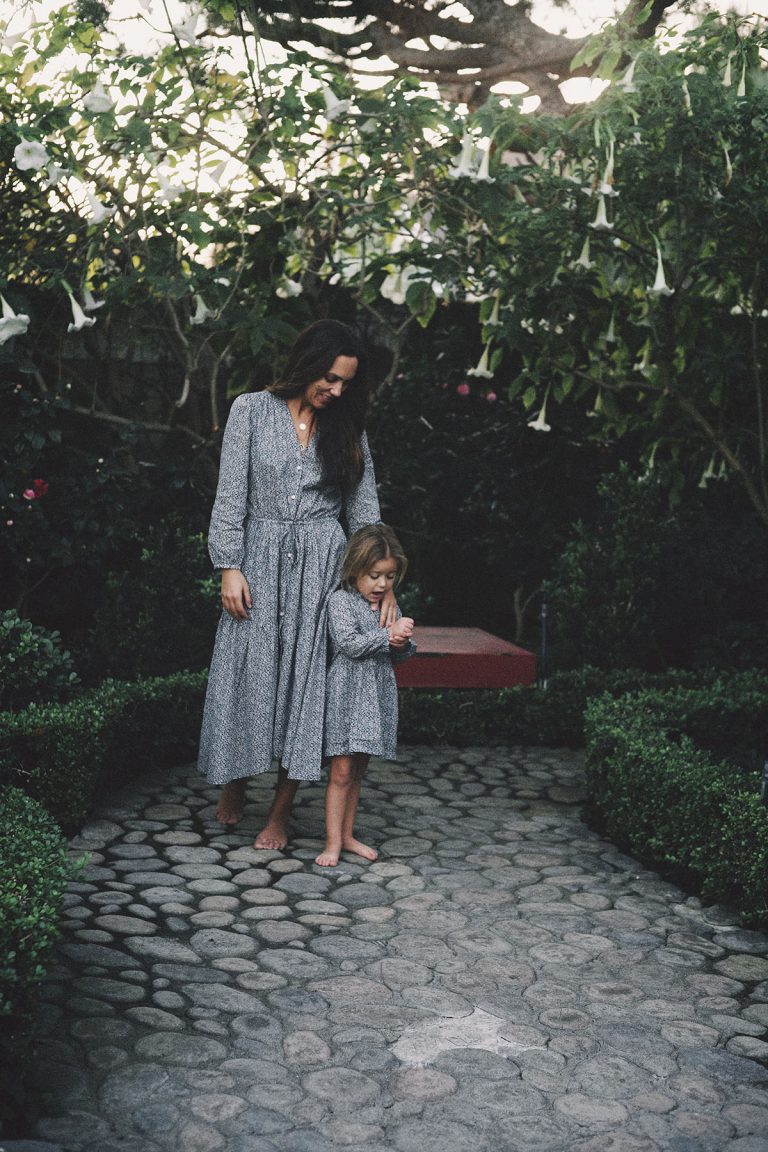As I Officially Enter My 40s This Year, There’s a New Word in Town: Menopause
Last year I turned 40 which means this year I am officially entering my 40s. (It sounds scarier than it is—I’ve actually never felt better.) But at this age, there is a new topic that has suddenly entered my lexicon and conversations with friends: menopause. Of course, we all know it’s coming—we’ve all seen our mom or grandma have hot flashes—but no one ever really thinks about it that much, that is, until you start experiencing symptoms.
Like most women, I feel unprepared for “the change.” And I’m not alone. The term “what is menopause?” yields 55 million search results and a quick look in Google Trends reveals this search term is spiking. In fact, the query, “what is the average age of menopause” is up 140%.
So, obviously, I’m not the only one looking for answers. According to Forbes, there will be over one billion women experiencing menopause in the world by 2025—that’s 12% of the entire world population of eight billion. That’s a whopping $600 billion market opportunity which sadly remains largely untapped, in part due to stigma (and the silence as a result), but also because brands are failing to target menopausal women.
According to a recent study titled Generation Menopause: The Invisibility Report by education platform Gen M, “91% of consumers experiencing menopause have never seen any specific advertising or marketing for products that target the end of the menstrual cycle” and the brands that are targeting menopausal women are falling short of connecting and servicing their needs with “uninspiring, unreflective, and limited product and marketing offerings.”
It’s safe to say a boom in menopausal products and offerings is coming and Dr. Manuela Maria Vazquez, ob/gyn is at the forefront of that wave with her new line LaMaria, designed for women over age 30 who are experiencing hormonal changes. The brand launched this month with two debut products including Carioca Feminine Moisturizer—designed to relieve irritation and dryness while soothing, calming, and restoring intimate tissue; and Mineira Phytoestrogen-Infused Face Moisturizer—using plant nutrients to restore estrogen production as it winds down in your 30s and beyond.
According to Dr. Vazquez, 50% of women over the age of 50 will complain of vaginal dryness but she also notes that 20% of women under the age of 50 have similar issues due to hormonal changes from other causes, such as breastfeeding or certain medications.
So, we tapped Dr. Vazquez to answer what is menopause (including what is perimenopause), what age does it start, what are the symptoms, and so much more!
featured image by Jenna Peffley

What is menopause exactly?
The medical definition of menopause is having gone an entire year without a period. It is the marker of when a woman’s ovaries stop producing estrogen and she no longer ovulates.
When can we expect to enter into menopause and how long does it last?
The average woman in America goes through menopause at the age of 51. Prior to hitting the year mark, you are considered perimenopausal and after menopause, you are considered postmenopausal. Technically, menopause lasts just one day. Celebrate it! Mark the day on your calendar once you have hit the year mark without having a period. You are official!

What are the three stages of menopause?
1. Perimenopause:
Perimenopause is the phase leading up to menopause. Your hormones begin fluctuating, and you may start to have symptoms due to these changes in hormone levels. How long you are perimenopausal can vary from woman to woman. The majority of women tend to have symptoms from 1 to 5 years prior to entering menopause, but some women may experience symptoms much longer.
The one symptom that every woman will experience is irregular periods, whether in terms of length of cycles or amount of blood flow. For some women, this will mean that their cycles become longer than normal or shorter; for others, this might mean that periods, when they occur, are unusually heavy or light.
Many women may also experience a combination of a few of the following:
Hot flashes
About 75-80% of women will experience hot flashes. Many women will experience them in the perimenopause period, but some will only experience them after menopause. A hot flash is a sudden rush of heat throughout your body that can last from a few seconds to a few minutes. I’ve had some patients describe it as the feeling of someone opening an oven in your face. They may occur during the day and/or at night.
Sleep disturbances
This may be due to the hot flashes that you are experiencing throughout the night. You may also notice insomnia or waking up at different hours of the night with difficulty falling back to sleep.
Vaginal dryness/sexual changes
The vagina is very estrogen-dependent, so as our hormone levels decline, our vaginas become dry. Without estrogen, the tissue becomes thinner and less elastic. These changes may lead to painful intercourse.
Accelerated bone loss
We all start to lose some of our bone during our mid-30s, with an exponential decline approx. four to five years after menopause.
Mood swings
Memory changes
Menstrual migraines
Skin dryness
Central weight gain
As far as treatment options go, we always try and treat the most bothersome symptoms first. For example, if you are suffering from hot flashes so severe that it is impacting your quality of life, we might recommend systemic hormone replacement therapy. If your only complaint is vaginal dryness, then we might recommend topical estrogen for your vagina or over-the-counter feminine moisturizers.
2. Menopause:
By definition, menopause is simply the day that you have gone an entire year without a period. The average woman in America goes through menopause at the age of 51, but this means that menopause can happen anytime between a woman’s 40s and 50s. Interestingly, most women go through menopause around the same age their mother did.
3. Postmenopause:
You are considered postmenopausal the day after menopause, and you will be postmenopausal for the rest of your life. Symptoms such as hot flashes and mood swings are more likely to appear in the first few years after menopause. Vaginal dryness is the symptom that tends to manifest slightly later but lasts the longest.

How can you treat menopausal symptoms?
The remedies with the most robust clinical data are pharmacological remedies such as hormone replacement therapy. These are among the remedies that have been shown to be the most efficacious in mitigating postmenopausal symptoms. For women who can’t take hormones or simply prefer not to, there are other non-hormonal medications that have been shown to help with menopause symptoms such as gabapentin and antidepressants, especially in the selective serotonin reuptake inhibitor family.
For women suffering from vaginal dryness, vaginal hormonal therapy is an option, as are over-the-counter feminine moisturizers. Approximately 50-75% of women use complementary or alternative therapy to help with symptoms associated with menopause. We now have some evidence that cognitive-behavioral therapy and hypnosis are showing promising results for decreasing the quantity and severity of hot flashes.
Anecdotally, the patients most likely to thrive during this decade have been noted to engage in activities that support a holistic approach to health and wellness. Although there aren’t many clinical studies that can account for their efficacy, these activities can include yoga, exercise, acupuncture, mind-body-based therapy (stress management, meditation, relaxation, deep breathing techniques, guided imagery, and so on), and mindfulness practices.
What is perimenopause?
There simply isn’t a lot of information online about perimenopause, which is surprising, since half of the human population experiences it.
One of the most difficult aspects of the perimenopause and menopause years is just how unpredictable the symptoms can be.
Periods change and finally cease; some women experience hot flashes, mood swings, sexual changes, sleep disturbances, new joint pains, and they start to notice the decline in moisture in their skin, vagina, and hair. One of the websites that I love to recommend to my patients as they start navigating these symptoms is the website of the NAMS (North American Menopause Society). It’s a great resource, with a wealth of information.
At the end of the day, there isn’t any way to slow down nature. The healthiest thing that you can do—for mind, body, and spirit—is to embrace the changes that you are experiencing and support yourself with whatever self-care will get you through the “hard parts.”
As with every transition in life—our first periods, our pregnancies—there are positive and negative aspects to the experience. My suggestion is to approach perimenopause and menopause with the same mentality: Relish the positive, listen to your body, and be proactive with supporting your body out of one stage of life and into another.

How does menopause affect our skin?
Estrogen is one of the most important hormones contributing to the production of collagen, elastin, and hyaluronic acid—the crucial components to maintaining skin elasticity and hydration. As our estrogen levels start to decline in our 30s and beyond, the estrogen receptors in our skin become depleted and we don’t produce as much of these critical molecules.
The resulting hormonal changes and the depletion of estrogen especially impact the skin and lead to dryness, thinning, fine wrinkling, and poor wound healing.
These symptoms correspond with structural changes including decreased sebum production, collagen content, dermal thickness, and elastin fibers.
What changes should women to their skincare routine during menopause?
Estrogen deficiency following menopause results in the acceleration of skin aging. The major changes that occur to our skin during the menopausal transition are associated with a decrease in elasticity and hydration.
Collagen content is reduced by as much as 30% in the first five years after menopause.
This decrease in collagen leads to the skin becoming thinner, less elastic, increases wrinkling and increases dryness. It is interesting to note that these changes are associated not with chronological age, but rather the period of estrogen deficiency.
This is the time when you want to make sure that you are using skincare products in your daily routine that will help hydrate, strengthen the skin barrier and boost collagen production… and it doesn’t hurt to start using these products before you enter menopause. It’s great to be ahead of the game.
LaMaria’s Mineira Phytoestrogen-Infused Facial Moisturizer was created specifically for use when estrogen production naturally begins to wind down in your thirties and beyond. Mineira was formulated using only the highest quality naturally-derived ingredients in concentrations that have been scientifically proven to be gentle, but effective, on the skin of a woman’s face.

Now, let’s talk about LaMaria—what was the lightbulb moment, and what makes it so effective in treating menopause?
LaMaria is an homage to my mother, Maria, who encouraged me to value women’s wellbeing, inspiring me to become a gynecologist. My mother has always believed that beauty is a sense of self-worth that radiates from within, best honored by taking care of ourselves. True to her Brazilian roots, she has always encouraged me to celebrate the joy of being a woman. Her legacy of confidence extends to all the women of our family who bear her name, from daughters to granddaughters.
As an ob/gyn dedicated to women’s health and wellbeing, I was underwhelmed with the options for patients experiencing vaginal dryness, a very common complaint heard by ob/gyns as their patients mature.
20% of women between the ages of 18-50 have complained of vaginal dryness at some point in their adult life and over 50% of women over the age of 50 suffer from vaginal dryness due to declining hormone levels.
I felt very limited with what I could offer my patients for their symptoms and found myself—for the first time in my practice—recommending products that I wouldn’t recommend to my sisters or my mother. I wanted to give them something better than products filled with unnatural chemicals and unproven ingredients, products that reinforced harmful taboos. In order to do that, I had to create them.
What are some lifestyle changes we can make now to alleviate menopausal symptoms?
Mitigating menopausal symptoms is inseparable from the pursuit of overall health and wellness. Two of the risk factors that have been shown to increase your chances of having hot flashes, for example, are smoking and obesity. If you are obese, even a 5% decrease in your body weight can make a difference. If you are a smoker, those bothersome hot flashes may be motivation enough to quit or cut down.
The older we get, the harder it is to change our habits. If you can establish an exercise routine, cultivate good sleeping habits, and enjoy a well-balanced diet, you will be well on your way to the best version of yourself at any stage of life.
Most importantly, educate yourself on those aspects of menopause that you have the power to control so that you can articulate your needs to your doctors and wellness providers and ensure that the transition into menopause is as smooth as possible.
